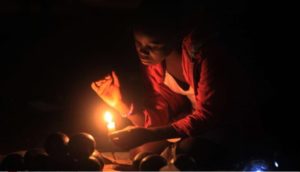
In November, Zambia became Africa’s first pandemic-era debt defaulter after it failed to service a $40m bond payment. Creditors rejected its pleas for a six-month grace period. For keen observers of Zambian affairs, this should hardly be a surprise.
Western holders of Zambian debt complained that they could not tell if Chinese lenders were getting preferential treatment. It looks likely that Zambia will seek to repay Chinese debt first, since Beijing is the only lender with a future-lending orientation towards Zambia, says Stephen Chan, professor at London University’s School of Oriental and African Studies.
Underlying problems
Overlooked elements holding back Zambia’s prosperity are a costly oil refinery that the World Bank has declared technologically unsuited for 21st century fuel needs, and soaring electricity blackouts that trouble both ordinary homes and small-to-medium enterprises.
READ MORE Africa’s BRICs held back by lack of electricity
Built in 1973, Indeni is Zambia’s flagship oil refinery. It converts crude oil piped from neighbouring Tanzania into unleaded petrol, gas oil, industrial kerosene or asphalt. According to the World Bank, this refinery is so outdated that its use raises energy costs for both consumers and industries.
Tied to this ageing energy plant is Zambia’s electricity shortage headache that the International Growth Centre at Oxford University says has left the country with a 34% electricity deficit since 2015.
‘Elephant in the room’
Without a technologically-adept oil refinery Zambia cannot reduce the corruption, logistical bottlenecks and wastage that are bedeviling the supply side of its increasingly road-freighted fuel imports.
If smaller, newer, and environmentally attuned fuel refineries are built, the flow of tax revenue and foreign exchange into state coffers could be significant, so decreasing Zambia’s indebtedness.
The elephant in the room is the Zambia Electricity Supply Commission (ZESCO), the country’s behemoth public utility.
ZESCO is a microcosm of Zambia’s expensive debts, “though the perplexing matter is, Zambia via ZESCO used to produce surplus electricity and even exported to the likes of Malawi and Congo,” says Deogracias Kalima, an independent economics researcher in Chipata town, on the border with Malawi.
The utility now faces viability problems like the lack of profitability, liquidity, and particularly poor maintenance of turbines and pumps, says Chan.
ZESCO’s woes are largely man-made, though severe climate change and low Kariba dam waters are also degrading its ability to power Zambia.
READ MORE Zambia’s bondholders reject request to delay interest payments
Chaotic fuel supply infrastructure and hydroelectricity poverty are fuelling blackouts. The result is a switch by some citizens and small-scale businesses to dirty charcoal fuel, and pricey back-up generators.
This increases the cost of maintaining bulk municipal water supplies, and in 2019 necessitated a 300MW import of electricity in 2019 from South Africa.
This is a lose-lose scenario for Zambia’s domestic tax base, private households, small-medium scale industries, and creditors.
The key way forward for African countries like Zambia is to rely far less on loan finance.
As Chan warns, without the appropriate energy supply infrastructure, a real industrial sector and a dynamic industrial strategy are impossible in Zambia, as South Africa has found to its cost.
The solutions are also connected
To pay back its creditors and secure future loans, Zambia must professionalize or partially privatise its assets, chiefly ZESCO and the Indeni oil refinery. Reliable energy could jolt its industries into more efficient output and help ensure access to funding markets.
A liberalised fuel supply chain and a robust, brand new refinery would enrich Zambia’s budgetary tax collection, diversify exports from copper, and enable the treasury to pay its debts. “The key way forward for African countries like Zambia is to rely far less on loan finance,” says Chan.
‘One glaring gap in Zambia’s approach’
As for energy, there is one glaring gap in Zambia’s approach. The country must accelerate the bringing of diverse sources of power such as solar and wind. “Diverse energy sources don’t get serious consideration in Zambia. As workers we know there is no alternative plan but to lean on old, unsustainable and poorly-serviced current hydro-electricity power plants,” says Hector Lwazi, an independent labour activist in Ndola city, where the Indeni refinery is located.
“Our biggest solar plant supplies only 54MW and 30,000 households in a country of 17 million. Do you realise the huge potential of green energy jobs slipping by ?”
READ MORE Zambia’s dependency ratio indicates future debt crises
85 % of all electrical energy in Zambia is hydro-generated yet the country is blessed with abundant sunshine nearly all year. In fact, according to an Oxford university geography department study, the number of ‘hot’ days in Zambia has increased per year by 43 between 1960 and 2003.
On the flip side, climate change which is making Zambia hotter and cutting down its rain and cold days per annum, could be a boon for setting up serious solar plants and countering low hydro-dam-water levels. Serious harvesting of solar energy could free up pressure on hydro-plant outputs and allow Zambia to export more megawatts to Congo up north and south to Zimbabwe where copper, cobalt or diamond mines are hungry for energy.
READ MORE DRC mining risks worsen as artisanal cobalt miners turn to copper
The Zambia energy ministry did not respond to questions about the future prospects of its ZESCO utility and Indeni refinery though in May it enthusiastically hailed the signing of a $580m deal with Power China, a builder of photovoltaic plants, as a sign of Zambia’s serious foray into renewable energy.
Bottom line
Without fixing and diversifying its domestic energy pool, Zambia is leaking money. Money that’s being used to pay off its growing Western and Chinese debts.


